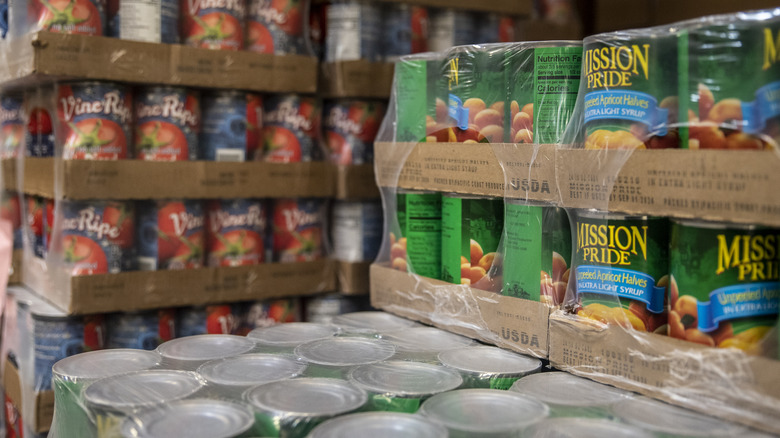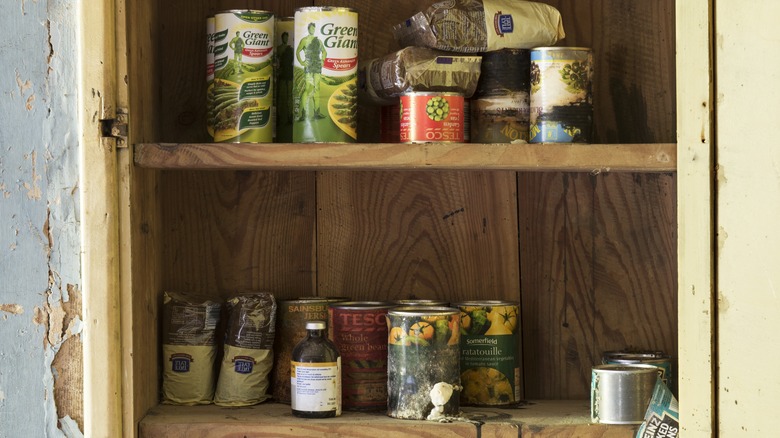The Real Reason The Canned Food Market Has Been Booming
We can't say there have been many good things that have come out of the coronavirus pandemic, but if there is one sector that's benefitted from the lockdowns and the uncertainties that have come with it, it's the canned food sector. Before 2020, The New York Times reports canned foods had been seeing a slow and steady drop in interest, as Americans pivoted away from the preserved to focus on fresh produce, thanks to the perception that fresh foods were better for you. The drop in demand was so noticeable that General Mills, which makes Progresso soups, had to close one of its soup plants in 2017. But all that changed just a few years later; the jump in demand for canned food during the pandemic meant more hiring, and better pay for production workers. As a result, the canned food market saw growth of nearly 3.3% in 2021.
But even with the pandemic slowly moving behind us, our appetite for canned goods appears to have remained undiminished, and a study by Technavio shows demand for canned food in the region will contribute to 32% of the global market between 2021 to 2025. It also points to "the growing need for convenience foods owing to hectic lifestyles" as a reason for the very public pivot in favor of canned food.
Canned food has significant pluses in its favor
Technavio says other than convenience, consumers who hadn't thought about buying canned food in the past were doing so now because there was a realization that canned food cooked more quickly, was easier to prepare, and if unopened, there was no need to worry about food spoilage. The Boulder City Review even points out that canned produce is a good source of vitamins and minerals, while canned beans, specifically, are a reliable source of protein, carbohydrates, as well as the all-important fiber.
But there are a few spoilers — an increase in demand for canned food could kick up the number of product recalls, too, since the sector has been known to experience problems involving integrity of the canned food's raw ingredients, or instances of improper food labeling. And then there is the supply chain problem, which involves ensuring a steady flow of both food-grade cans and ingredients to meet a growing appetite for this once-overlooked product, per The New York Times.

